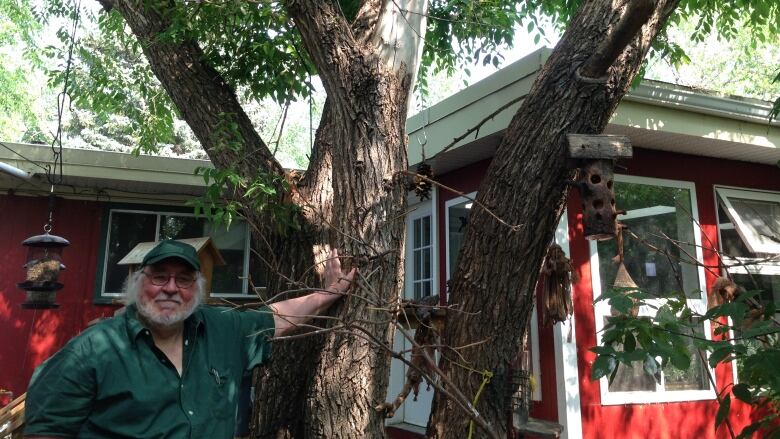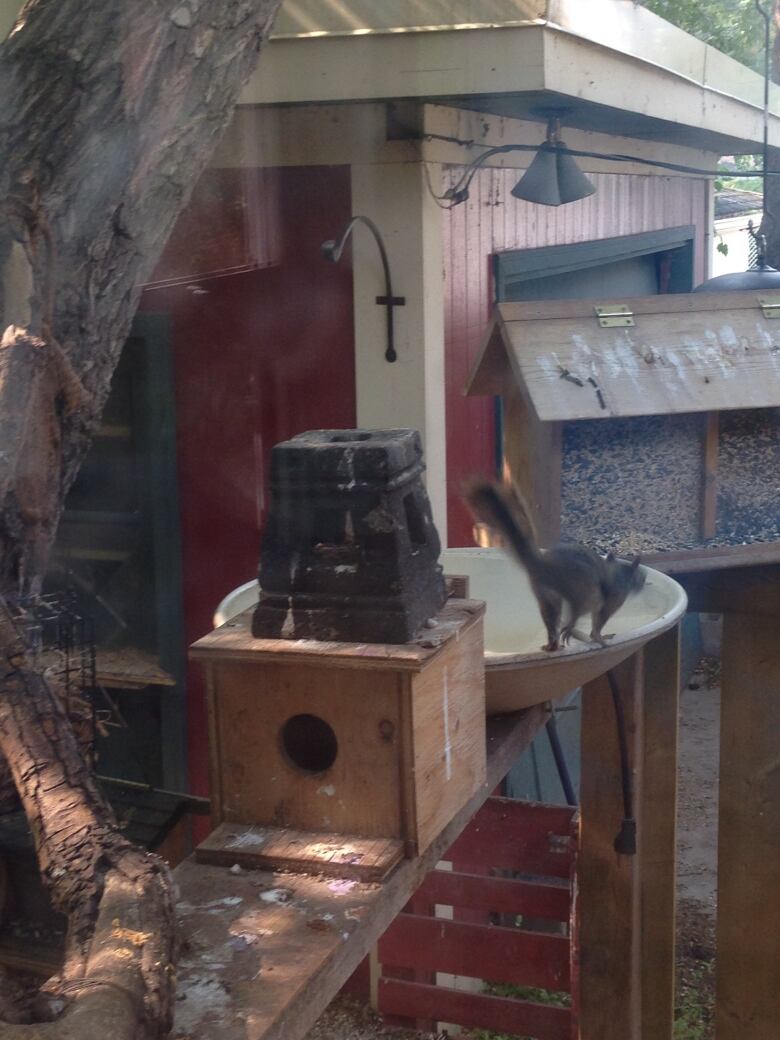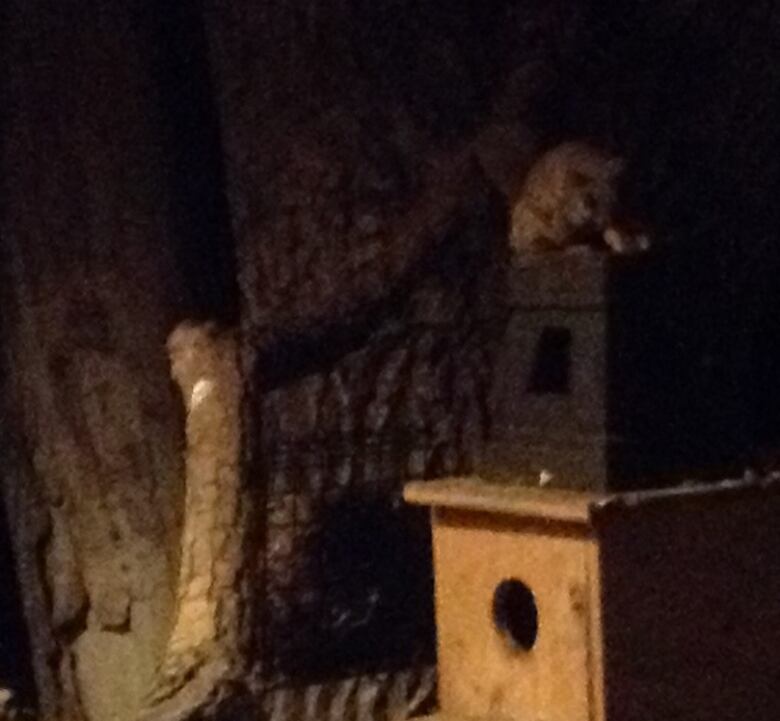Flying squirrels, porcupines and others take refuge in Windsor Park yard
Retired naturalist Jim Butler has allowed his backyard to transform back into urban forest

There's a little slice of wild paradise tucked away in a Windsor Park backyard butyou wouldn't know it at first glance.
Retired naturalist Jim Butler says he has a "reasonably typical backyard." But there's one notable difference.
"Here I've let sort of nature take its hand in shaping it," he admits.
That means long grass and leaving the trees to seed where they will, gradually transforming into an urban forest.
"It's a bit of an inter-urban nature sanctuary."

The northern flying squirrels found in Edmontonare nearly twice the size of their southern counterparts, and have flaps of skin connecting their front and back paws, allowing them to glide from tree to tree.
"The tree right beside my back porch here is a big American Elm and there are bird houses, which are occupied by the squirrels," Butler says. "They come in, they have their own special feeder."
Butler keepsthefeeder stocked with gourmet nuts and sometimes berries, since the nocturnal flying squirrels are picky eaters. During the daytime, the red squirrels take over, he says.
Butler says some of his squirrels came to his yard via a local wildlife rehabilitation group, which rescues injured and orphaned animals. According to Butler, flying squirrels are generally found when the trees they are in are felled. Some, however, come from less conventional places.
"I had three flying squirrels here that were found in the backroom of a liquor store so obviously they have an alcohol problem," he says with a laugh.
Settling in
When he receivesa new animal from the society, Butler takes steps to introduce it to the backyard ecosystem slowly, keeping itin a cage in behind his house where they can see and interact with other animals.
"Then eventually when you think that they're comfortable and calm, then we can release them out and they don't just run away and panic."
What do Butler's neighbours think of all this four-legged foot traffic scampering across their lawn?
"For the most part, I think that people like the novelty of it," Butler says.

Occasionally, neighbours will even bring an injured animal by for Butler to look after.
"It's not a lot of work. I mean, I have to buy a lot of birdseed just the usual."
Butler doesn't see himself abandoning his forest any time soon.
"I'm a naturalist, I like to surround myself with wildlife. I'm also a Buddhist so being close to nature is very important to me," he says. "Although I'm probably the only one whohas let their backyard really turn into a fully wild place and I just keep up."
That's something he'd like to see change, however. He wishesmore Edmontonianswould takestewardship of the city's green spaces and wildlife.
"We're fortunatehere in Edmonton because we have a nice green river valley coming through the middle of the city and little patches of neighbourhoods like this.
"We could do a lot more in our neighbourhoods. We really could."
With files from CBC's Ariel Fournier












_(720p).jpg)


 OFFICIAL HD MUSIC VIDEO.jpg)
.jpg)



























































































